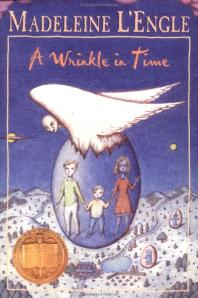Here’s my to-read list for 2014. It’s incomplete, always changing, and I’m sure I won’t get to all of these, not by a long shot, but it’s a convenient list when I’m choosing my next book. You may see a few of them featured on Books Can Save a Life. I’ve included titles that will be published in 2014, so you won’t find all of them on the shelves yet.
If you have enticing choices on your list, please share them in the comments!
Watch for my book giveaway in February to celebrate the second anniversary of Books Can Save a Life.
FICTION
The Snow Child, by Eowyn Ivey “If All of Rochester Read the Same Book,” 2014
The Goldfinch, by Donna Tartt
Someone, by Alice McDermott
Carthage, by Joyce Carol Oates
Arctic Summer, by Damon Galgut
The Unknowns, by Gabriel Roth
The Circle, by David Eggers
Colorless Tsukuru Tazaki and His Years of Pilgrimage, by Haruki Murakami
The Signature of All Things, by Elizabeth Gilbert
Life After Life, by Kate Atkinson
How Should a Person Be? by Sheila Heti
The Paying Guests, by Sarah Waters
And Then We Came to the End; The Unnamed; To Rise Again at a Decent Hour, by Joshua Ferris
Orfeo, by Richard Powers
Never Go Back, by Lee Child
The Language of Flowers, by Vanessa Diffenbaugh
The Snow Queen, by Michael Cunningham
The Bone Clocks, by David Mitchell
The Interestings, by Meg Wolitzer
The Luminaries, by Eleanor Catton
Lila, by Marilynne Robinson
By Blood, Ellen Ullman
Canada, by Richard Ford
In Sunlight and in Shadow; and Winter’s Tale, by Mark Helprin
The Cuckoo’s Calling, by Robert Galbraith (J.K. Rowling) and Untitled (2014)
The Woman Who Lost Her Soul, by Bob Shacochis
Off Course, by Michelle Huneven
Gone Girl; Dark Places, by Gillian Flynn (movies in 2014)
Wolf Hall, by Hilary Mantel (Best book of the 21st century, according to Elizabeth Gilbert)
****************
IN TRANSLATION
My Struggle, Books 1, 2, 3 by Karl Ove Knausgaard (Norwegian)
Treasure Hunt; The Dance of the Seagull by Andrea Camilleri (Sicilian)
Story of a New Name, by Elena Ferrante (Italian)
YOUNG ADULT
The Giver Quartet Series (including Son), by Lois Lowry
Divergent Series, by Veronica Roth
Mockingjay, by Suzanne Collins
The Fault in Our Stars, by John Green
*************************
MEMOIR
Men We Reaped, by Jessamyn Ward
Still Writing, by Dani Shapiro
This Is the Story of a Happy Marriage, by Ann Patchett
Wave, by Sonali Deraniyagala
Intensive Care: A Doctor’s Journey; and Medicine in Translation: Journeys with My Patients, by Danielle Ofri
**************
NONFICTION
Big Data: A Revolution that Will Transform How We Live, Work, and Think, by Victor Mayer-Schonberger and Kenneth Cukier
Who Owns the Future? by Jaron Lanier
The Burglary: The Discovery of J. Edgar Hoover’s Secret FBI, by Betty Medsger
Thank You for Your Service, by David Finkel
Five Days at Memorial: Life and Death in a Storm-Ravaged Hospital, by Sheri Fink
What Doctors Feel: How Emotions Affect the Practice of Medicine, by Danielle Ofri
Manson: The Life and Times of Charles Manson, by Jeff Guinn
The Unwinding: An Inner History of the New America, by George Packer
Margaret Fuller: A New American Life, by Megan Marshall
The Skies Belong to Us: Love and Terror in the Golden Age of Hijacking, by Brendan I. Koerner
The Gorgeous Nothings: Emily Dickinson’s Envelope Poems
Stalking the Divine, by Kristin Ohlson
Sons of Madness: Growing Up and Older with a Mentally Ill Parent, by Susan Nathiel
Is There No Place on Earth for Me? by Susan Sheehan
Dear Genius: The Letters of Ursula Nordstrom, by Leonard S. Marcus







 I was a Nancy Drew reader, too. I bought the first dozen or so books one by one and tried to read them in order, but soon gave up because my reading habits outpaced my cash flow. So I borrowed them from the library and a friend and fellow Nancy Drew fan.
I was a Nancy Drew reader, too. I bought the first dozen or so books one by one and tried to read them in order, but soon gave up because my reading habits outpaced my cash flow. So I borrowed them from the library and a friend and fellow Nancy Drew fan.
